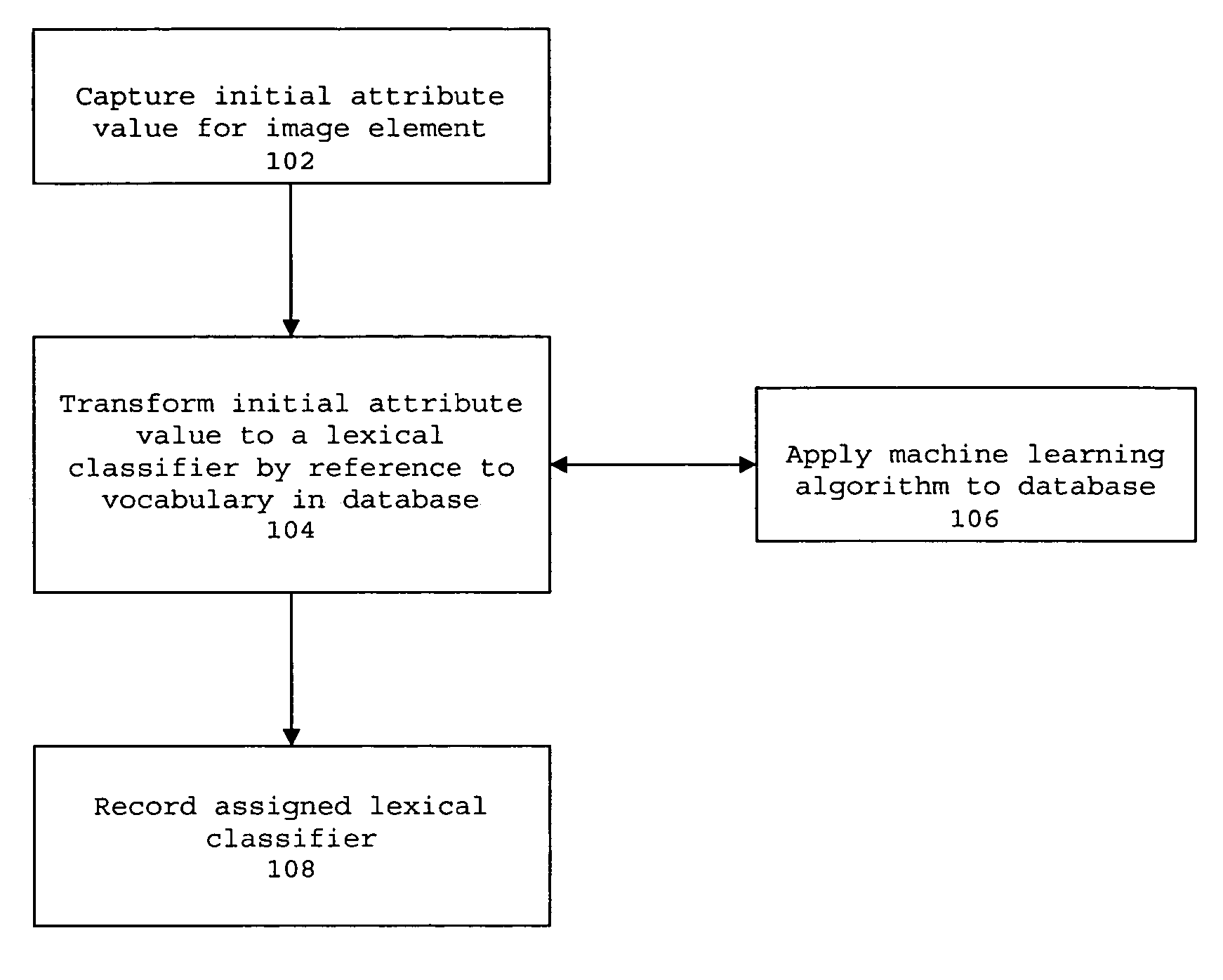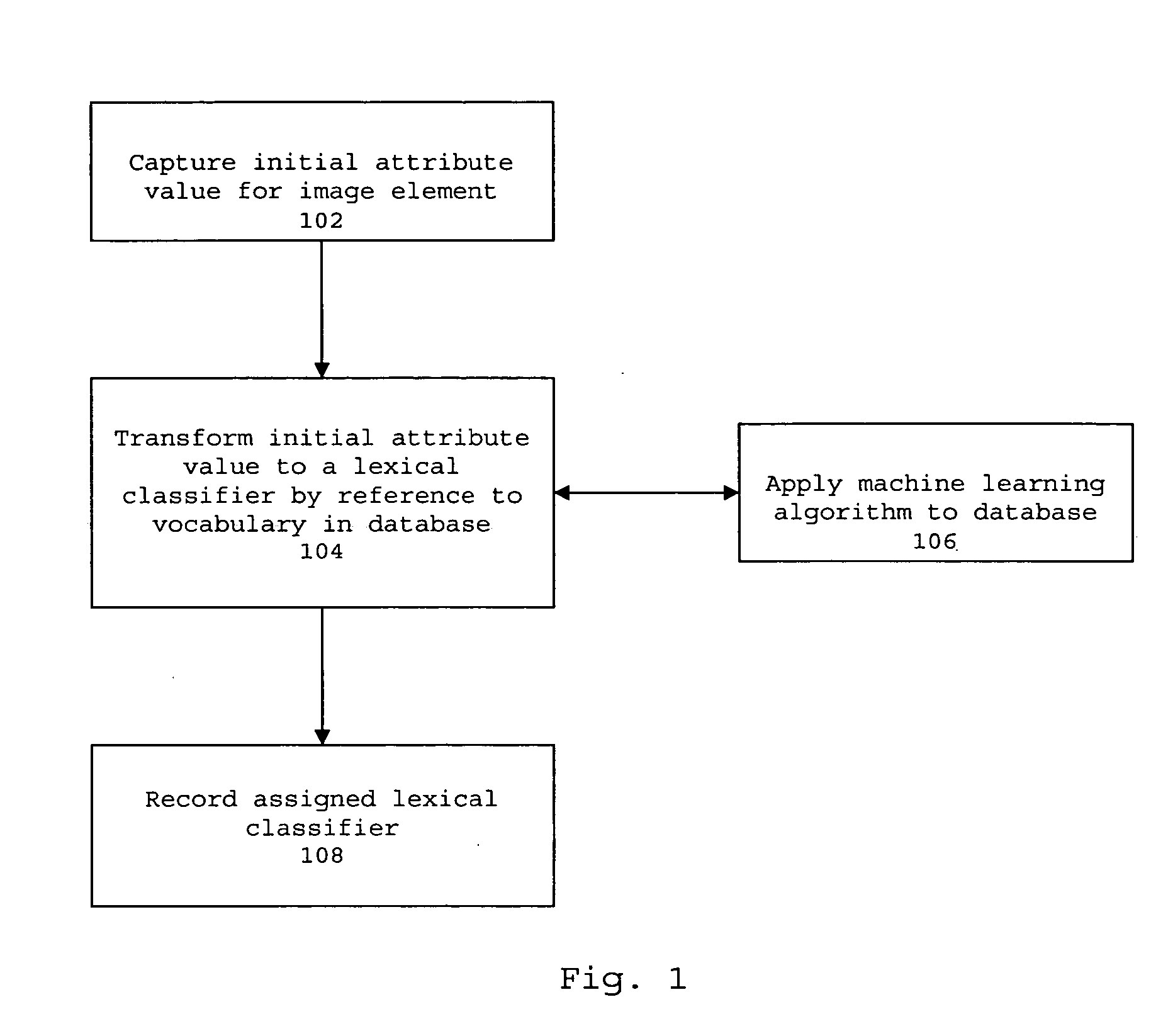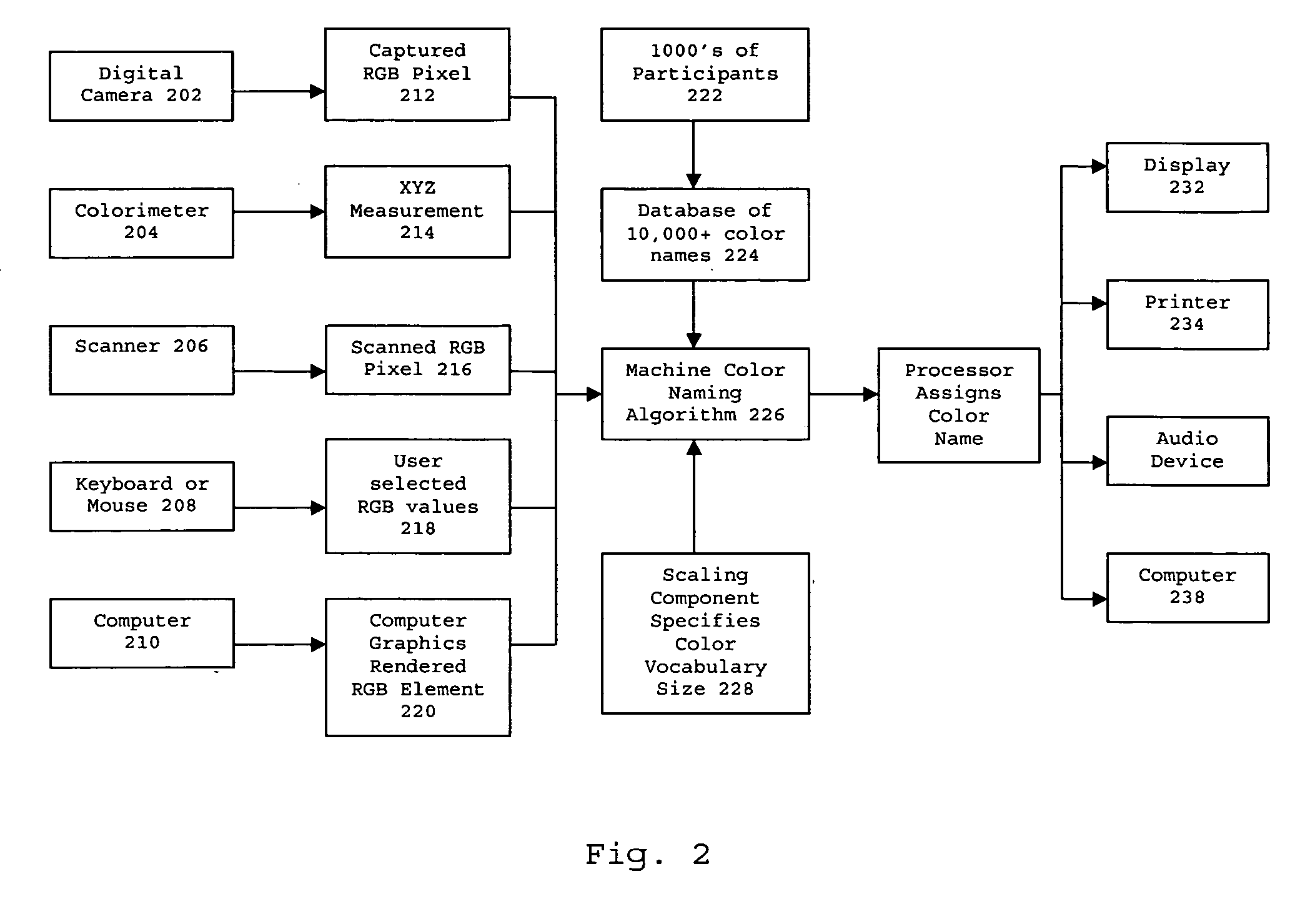Adaptive lexical classification system
a lexical classification and adaptive technology, applied in the field of visual attributes naming, can solve the problems of not providing intuitive means, findings not assisting in providing a robust, universal system for communicating color,
- Summary
- Abstract
- Description
- Claims
- Application Information
AI Technical Summary
Problems solved by technology
Method used
Image
Examples
Embodiment Construction
[0014] An embodiment of the invention is illustrated in FIG. 1. The method assigns a lexical classifier for characterizing a visual attribute corresponding to an image element forming part of an image. The image element may comprise a pixel when the image is a raster image, or a vector element when the image is a vector image. Although the method is described with reference to color as the visual attribute, it is to be understood that the method has equal utility in assigning lexical classifiers to other visual attributes including texture and shape.
[0015] A first step 102 involves capturing an initial attribute value for an image element 102. The initial value may be captured in the form of a conventional color encoding such as an RGB pixel value, an XYZ measurement or a CIELAB encoding. A next step 104 involves transforming the initial attribute value into a lexical classifier by reference to a set or vocabulary of lexical classifiers or color names which are stored in a database...
PUM
 Login to View More
Login to View More Abstract
Description
Claims
Application Information
 Login to View More
Login to View More - R&D
- Intellectual Property
- Life Sciences
- Materials
- Tech Scout
- Unparalleled Data Quality
- Higher Quality Content
- 60% Fewer Hallucinations
Browse by: Latest US Patents, China's latest patents, Technical Efficacy Thesaurus, Application Domain, Technology Topic, Popular Technical Reports.
© 2025 PatSnap. All rights reserved.Legal|Privacy policy|Modern Slavery Act Transparency Statement|Sitemap|About US| Contact US: help@patsnap.com



